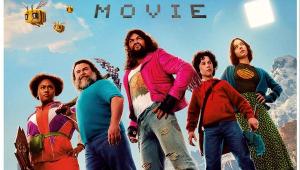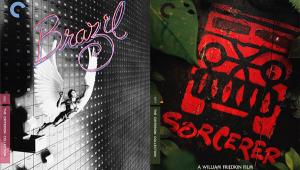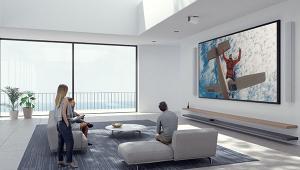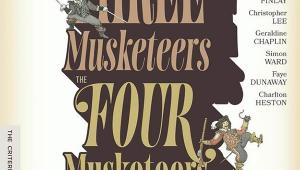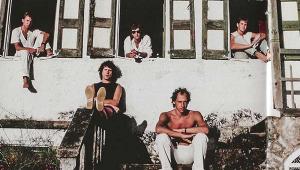Heavenly Surround Page 4
Telarc, Take 2 : LAGQ 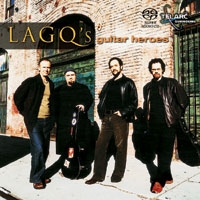 Telarc can certainly do classical. But can it do four acoustic guitarists who are playing what sounds like "Michael Hedges meets metal"? Sure it can, when the players are the Los Angeles Guitar Quartet, who last regaled us with LAGQ Latin - a true surround SACD, because it placed the four guitarists individually in the four left/right channels. The quartet's new SACD has the same layout, but the repertoire is decidedly different, as they pay homage to their Guitar Heroes - everyone from Chet Atkins to Frank Zappa.
Telarc can certainly do classical. But can it do four acoustic guitarists who are playing what sounds like "Michael Hedges meets metal"? Sure it can, when the players are the Los Angeles Guitar Quartet, who last regaled us with LAGQ Latin - a true surround SACD, because it placed the four guitarists individually in the four left/right channels. The quartet's new SACD has the same layout, but the repertoire is decidedly different, as they pay homage to their Guitar Heroes - everyone from Chet Atkins to Frank Zappa.
Some of the pieces, like the Atkins medley of "Blue Echo/Country Gentle-man," are arrangements of the heroes' work, including Pat Metheny's "Letter from Home" and Steve Howe's "Mood for a Day." Other pieces, like Bryan Johanson's Zappa homage "Let's Be Frank," are inspired by the heroes, including Matthew Dunne's nod to Django Reinhardt, "Gypsy Flower," and Johanson's tribute to Jimi Hendrix, "Pluck, Strum, and Hammer."
Another of the hero-inspired pieces is Evan Hirschelman's "Lament and Wake," the first and third parts of Textures: In Memory of Michael Hedges . To hear the LAGQ record this track, I went to L.A. (naturally), the home of O'Henry Sound Studios. And that's where Hirschelman, who was at the session, told me he intended the "Wake" segment to sound "really heavy. . . . I wanted the entire Textures to sound like Hedges but also to fuse my other influences: classical and metal. I love a lot of the progressive-metal stuff, like Dream Theater and old-school King Crimson. And you'll hear it in the odd time signatures and the tapping and slapping in 'Wake.' "
Capturing all that for SACD were producer (and Telarc president) Robert Woods and engineer Robert Friedrich. At O'Henry, the guitarists were set up as you hear them on disc: Andrew York at left front, William Kanengi-ser at right front, John Dearman in the left surround, and Scott Tennant in the right surround. Each of the players had a mike in front of his guitar and a mike above him - "to give a sense of the space," Friedrich said, "so that everything doesn't sound too pin-pointy." The SACD's center channel features a guest or two (like udu player Tim Timmermans on Ralph Towner's "Icarus"), and the subwoofer is used sparingly.
The four main channels sound terrific at the start of "Lament and Wake," where the first theme begins in the left surround, followed by a secondary line in the right front and then two-part-harmony figures in the left front and right surround. And when the guitarists hit the "Wake," those taps and slaps are everywhere, crisscrossing between the four corners.
It was a challenging piece to record, however. In the studio, there were many directives from both composer Hirschelman and producer Woods: "You're too soft" or "You're too harsh" or "Can you be a little more aggressive?" At one point, Dearman literally fretted over getting one of his strings to ring correctly in a figure of three successive harmonics. The LAGQ had already finished two pieces earlier in the day - and now, at 10 p.m., they were attempting one of the most difficult works on the disc. Finally, Woods told them, "I'm putting out the caution flag. This part has to be rock-solid. If you can do it, great. But for me, you're 10 minutes away from conking out." And that was that. Session over. See you tomorrow.
The good news from the SACD is that they ultimately nailed it, because "Lament and Wake" shows them deftly handling the abrupt shifts from soft elegy to high energy. And all told, Guitar Heroes is another musical triumph for the quartet - and yet another surround triumph for Telarc.
"The more you do, the more you learn," said Woods. "We're several years into surround now, and it's still an ongoing learning process."
Because both SACDs by the LAGQ treat the four lef t /right channels as equals, does Woods worry about some listeners having small satellite speakers in the rear?
"No, I can't, because we're doing this for the optimal setup of matched, full-range speakers, according to the standard for music in surround, and we want more people to come up to that standard. With a lot of our recordings, especially of huge orchestral pieces, there's no way that a small, inexpensive system can reproduce them - no way in hell." That said, I've heard the LAGQ disc not just on full-range speakers but also on a sub/sat system, and the sound was close to heaven in both cases.
"I do realize that a lot of people can't have a full-range system at home because it could ruin a marriage in a heartbeat," Woods admits. "But in the end, we're saying, look, the technology was designed this way. This is where the bar is set, and we're going to push it to the max."
- Ken Richardson





















